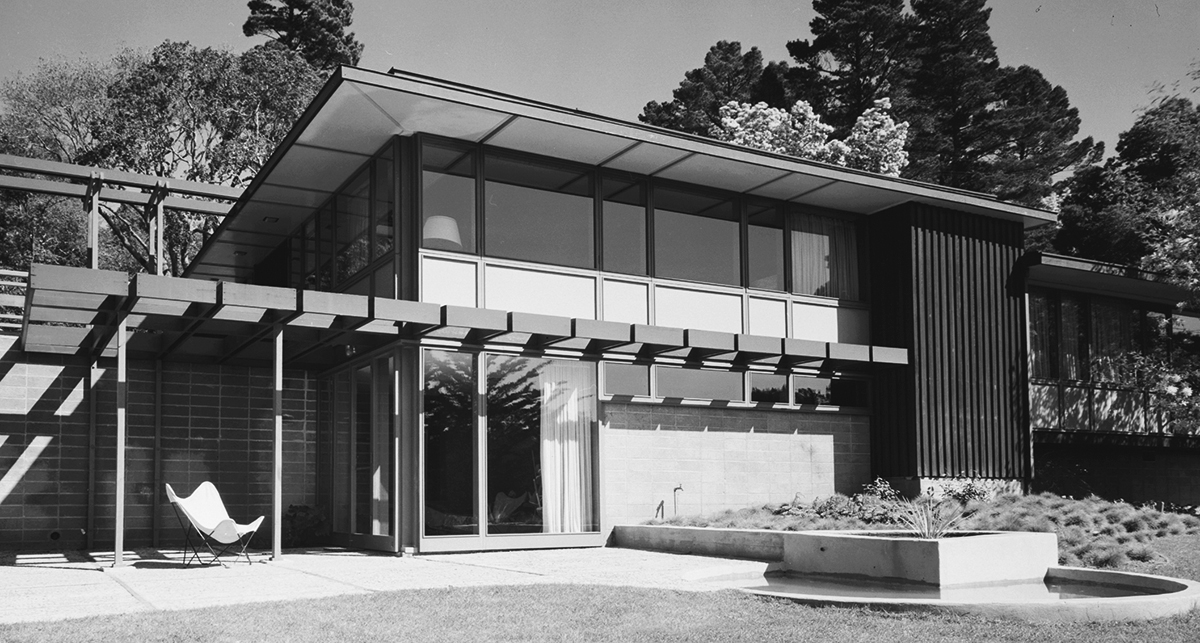Once Upon a Dream - Page 4
 |
|
|
 |
|
|
 |
|
|
The association sold its property to a private developer in 1950. Joe Eichler bought part of the site and built about a dozen homes in 1951 to designs by Jones & Emmons.
By the time Eichler was building his version of Ladera, the Steins had given up on America. Both Joe and Margaret were dispirited by the Red Scare that was consuming the country. "He was disturbed by what was happening in America, McCarthy and all that. A troubled time," Ethan said. And Margaret hated what she saw as the country's "consumerism, commercialism, American greed." Plus, Stein saw little opportunity to build the kind of housing he wanted to build.
So began a peripatetic period, the family living in Italy, where they gathered with other temporarily expatriated California designers, Geneva, and Mexico, where he sought work designing public housing and hobnobbed with 'socialist thinkers,' Ethan said.
Finally Stein ended up in, of all places, India, thanks to a recommendation from Richard Neutra that he run the architecture department at Bengal Engineering College in Calcutta.
Starting in 1955, Joseph Allen Stein and Associates and a successor firm became architectural leaders on the subcontinent, designing public buildings, schools, projects for the World Bank and Ford Foundation—and prototypes for low-cost housing. Stein, who never learned to speak Hindi and did not like Indian cuisine, became a mentor to a generation of architects.
None of this was planned, Ethan said. "He was just going for a couple of years. That was it."
"Why do I continue to live and work in India? I think India offers the great possibility of beauty with simplicity," Stein wrote.
Stein never lost his commitment to social betterment, working for years in the Himalaya, including Kashmir, Bhutan, and Sikkim, where he loved to hike. These included areas that, in the early 1970s, remained remote and largely untouched by outside cultural influence.
He designed what he called 'eco-architecture,' projects and regional plans featuring "forms that sit lightly on this beautiful, fragile home of mankind." Stein's warnings against rampant deforestation in the area helped lead to the creation of an international movement to preserve the forests, an effort that has had mixed success.
Unlike some, who blame tourism for bringing cultural and environmental havoc to once pristine lands, Stein saw tourism as a big part of the solution.
"Tourism is essentially a matter of sharing the beauties of nature…" he wrote, adding, "Accordingly, tourism—it requires a better name, one more suggestive of its possibilities of international cultural exchange—could become not only the world's largest industry, but perhaps its highest form of commerce."
But Stein's plans for ecological resorts did not become reality, and he acknowledged that he may have been suffering from "the naïve idea that tourism is based on the beauty of an area, and therefore it couldn't afford to have it destroyed."
But Stein never gave up his optimism. Ethan Stein recalled his father's favorite saying, "The probabilities are awful but the possibilities are marvelous."
• 'Building in the Garden: The Architecture of Joseph Allen Stein in India and California' by Stephen White was published in 1998 by Oxford University Press, Delhi
Photography: Ernie Braun; courtesy JC Miller Archive, Ethan Stein, Avinash Pasricha
- « first
- ‹ previous
- 1
- 2
- 3
- 4




